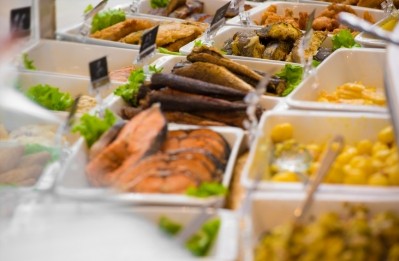Part buying club, part meal kit, Chicago startup KitcheNet wants to make eating healthy easier for food insecure households

“We are a combination of a buying club, as well as a delivery service,” Trista Li, cofounder of the early stage startup KitcheNet, told FoodNavigator-USA.
It started as a prepared food delivery idea last year, which won Li and several other students third place at the university’s New Venture Challenge. It connected community centers, public kitchens, and cooks to make meals from cosmetically rejected produce for vulnerable households in food deserts.
Then the team came up with a much more efficient protocol; owning the entire supply chain would have been difficult, especially with a cooking component. “So we decided to pivot to a grocery kit business, focusing on increasing the purchasing power of SNAP users,” Li said. The company officially launched in July this year.
There’s demand for fresh produce
The concept is simple: No enrolment fees, no binding subscriptions—members to the service simply order one of three grocery kit sizes depending on how big their household is. Each kit was designed based on a USDA 'MyPlate' standard portion for a week, to be picked up by a customer, and paid for, at designated pick-up spots.
Priced at $22 for the small (good for one adult for a week), $38 for the medium (good for two adults and two children for a week), and $62 for the large (good for two adults and three children for a week), each KitcheNet kit strives to cost less than the average weekly grocery bill for the same amount of people.
The grocery kits include fresh produce, staple starches, and protein (such as chicken breast, ground beef, to frozen salmon and tofu). The team consulted with local culinary school chefs for ideas on what to stock the boxes with so that the ingredients are what households in the area are comfortable with. The kits will also include recipe ideas crafted by local chefs, to give customers ideas of how to use the ingredients.
While the target demographic is SNAP-qualifying households, and the kit prices fit into the average monthly benefits SNAP recipients get, the company is still working with the USDA so that their kits can actually be purchased using SNAP. The company is prepping to roll-out a subscription for non-Eletronic Benefits Transfer (EBT) users in the near future.

To Li, the service is less about the novelty or experience, which many grocery kit and meal kit services tout, but more about “leveraging the group pattern of purchasing to create purchasing power, so we can access a bigger amount of food at a price lower than they’re currently buying.”
Convenience with pick-up points
Lack of access to fresh produce is a well-known factor of its scarcity in the kitchens and pantries of urban America’s poor, but there was another, lesser-known issue on top of that, Li said, which her team found out from their interviews with households in Chicago’s food insecure neighborhoods.
“Many of the families, they purchase in bulk early in the month when they get the funding from food subsidy programs, and to really stretch their benefit dollars” Li said. “The challenge with purchasing in bulk at the beginning of the month, they won’t have any fresh produce remaining because they’re perishable.”
Additionally, many households buy for price, not convenience. If, say, a box of pasta is cheaper at store A but the jar of sauce is cheaper at store B, Li found that most households will make shopping trips to both store A and B to get these two different things. Without a car, this can be an especially daunting task. Hence, the weekly sizes.
To increase convenience, instead of door-to-door delivery, pick-up locations fit better with the company’s target demographic, co-founder Richard Wu said. “We wanted to make these groceries really, really affordable, so the operation costs would be super high if we include insulating materials, and then deliver straight to the door.”
At it's small, early stage, KitcheNet is sourcing the contents of its boxes from local, family-owned grocery stores in the communities it operates, mainly Chicago's South Side. "We know we're really young, and very new in terms of what we're doing," Li said. "But our biggest differentiating point for us is we're really eager to help the community. Most of the contents of the box is community-driven, so we do work with the local culinary school, we wanted to get access to individuals who are very knowledgeable about food--we wanted the community to promote their culinary culture."










